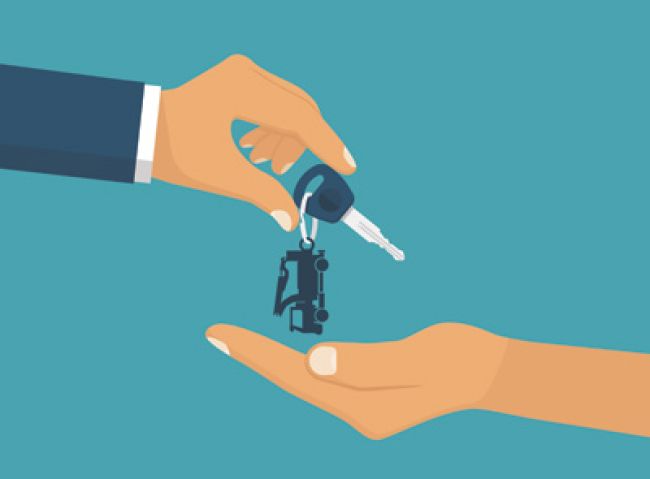
To Lease or Not to Lease
The conventional wisdom for most utility companies is to purchase their fleet assets outright.
And there are some advantages to that approach: potentially lower vehicle acquisition costs, no debt added to the balance sheet, and greater control over resale timing and pricing.
But as utilities see their profit margins getting squeezed, their fleet departments are becoming bigger targets for budget cuts.
So, when you’re under mounting pressure to do more with the same money as last year – or even less – how do you manage? How can you work within tighter financial constraints without sacrificing your fleet’s performance and reliability?
One option is leasing at least a portion of your fleet. But how do you decide which assets to lease? When does leasing make financial sense? And when doesn’t it?
UFP recently spoke with Charlie Guthro, vice president of global strategic services at ARI (www.arifleet.com), a fleet management company that works with several utility companies in North America, to get his perspective. Here is an edited version of our conversation.
UFP: What trends do you see when it comes to fleet leasing in the utility sector?
Charlie Guthro: We’re starting to see more utility companies looking at leasing and saying, “We might not lease our entire fleet. But we certainly see the potential opportunity to look at our most critical units – the power-line units, the units that are out there keeping the infrastructure rolling.”
The idea is that if we’re going to have constraints on capital, we’re going to need to, at least, consider leasing because we can’t allow the reliability, the downtime and the critical impacts of asset management to be impacted by the slowdown we see in capital investment.
And how would leasing be an effective strategy in those types of situations? What are the benefits it would bring to that utility?
The leasing part of the equation creates a more stable environment for your asset replacement cadence. That’s because the lease brings more structure and discipline to the process. There’s a specific term on the vehicle, which removes the year-over-year emotional outlook, where you’re thinking, “Maybe this year’s not a good year [for replacement], but perhaps next year will be. Our replacement ratio is set at 12 percent this year, but perhaps we should ratchet it down a little bit to, say, 10 percent this year and 9 percent in the next year because we’re a little bit restricted for funds.”
As a result, these fleets tend to make decisions based on emotion instead of making what we call evidence-based decisions. Leasing can bring more structure and stability to the decision-making process, so fleets don’t have to re-evaluate their decisions as much. You have a much better replacement cadence. And because of the discipline that comes with leasing, fleets tend to stick to it.
Why is maintaining discipline in fleet replacement cycles so important for utility fleets?
It’s important because a growing number of utility providers are challenged by shrinking margins and greater productivity demands on fleet to do more with less. All that leads to the question, when’s the best time to replace my fleet? What’s the most opportune time to manage my maintenance within that cost of repair versus replacement?
Then you have to ask, can I get the capital to achieve our replacement objectives? And if not, what are my other funding alternatives? That’s where we see more and more discussion around leasing.
Is there a specific class or application of vehicles or equipment that works well for utility fleets as a starting point to try out leasing?
I recommend looking at your most critical components that have the highest demand for reliability and most significant impact on the infrastructure – so, trouble trucks and other critical fleet units.
The idea is that I can go rent or purchase pickups, vans and other types of units that have a quick turnaround time. But my highly utilized vehicles that are essential to keeping the lights on? They have a long delivery lead time. That’s where leasing can help to ensure you’re able to replace those units in a timely manner.
When does leasing make good financial sense for utility fleets? And in what scenarios is it better for them to fully capitalize the vehicles?
When you’re considering leasing, start by evaluating the cost to finance, what it costs you to get those funds, the economic service life of the vehicle and your ability to turn over those vehicles within an optimal cadence.
But more critical than anything is this question: What can you do with that capital within your organization? You’re comparing it to the cost of transformers and poles and other infrastructure asset items.
So, it really comes down to this: Where’s the best value for your dollar? Is it using capital for other programs? Or is it using capital for your fleet? You want to make intelligent decisions [about the prospect of leasing] based on what the best use of funds would be for the business as a whole.
Do you have any closing thoughts?
Traditionally, fleets have looked at leasing as an all-or-nothing strategy. Either we lease our fleet, or we don’t. They would look at it in aggregate to the entire population of their fleet. But now we’re seeing that conversation around leasing shift to a more application-specific approach, where fleet managers are thinking, “Well, maybe there are portions of our fleet that we need to look at for leasing versus owning because those assets have different impacts to the service that we provide.”

